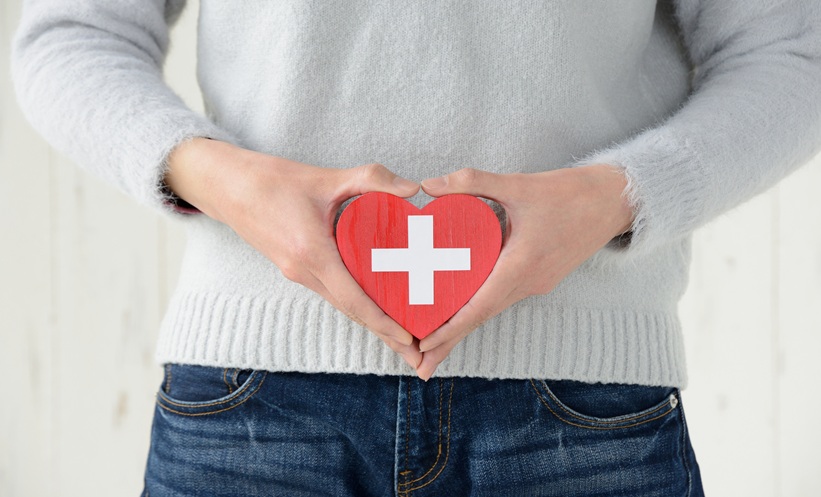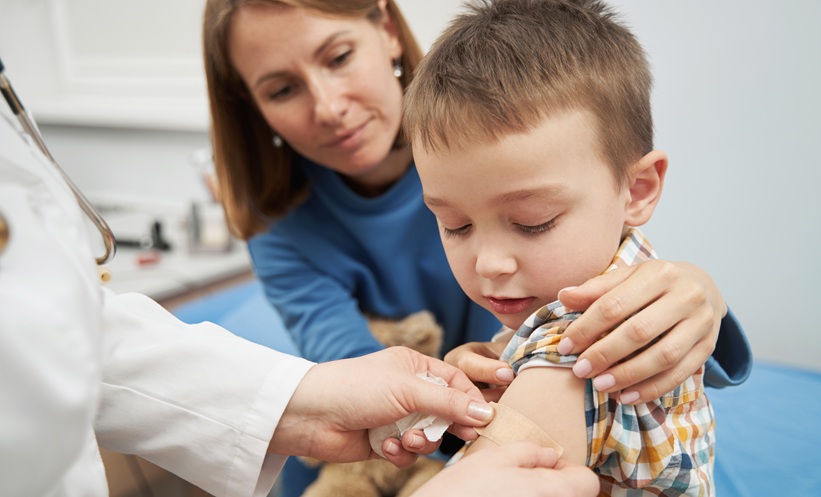Katherine Colvin | Editorial Manager
![]()
TWO YEARS AGO, the COVID-19 pandemic emerged and swept through the world, going on to have a profound human and health toll and a devastating impact on world economy. Two years on, the global scientific community has amassed a staggering and unprecedented volume of information about severe acute respiratory syndrome coronavirus 2 (SARS‑CoV‑2) and its resulting disease state COVID-19. By mid-February 2022, there have been a staggering 414.5 million confirmed cases of COVID-19, leading to 5.8 million deaths, with 10.2 billion vaccine doses administered worldwide.1 A PubMed search of “COVID-19 OR SARS-CoV-2” reveals an impressive >24,000 publications sharing insights into this new clinical entity. The speed of knowledge gained to aid understanding of epidemiology, pathophysiology, clinical manifestations and complications, and prevention and treatments is a result of awe-inspiring global displays of collaboration, transparency, and selfless dedication from the scientific, healthcare, and pharmaceutical communities. While it would be a mighty feat to summarise 24,000 studies-worth of clinical insights, highlights from some of the lessons learnt so far serve to celebrate the work of these communities in combatting this pandemic.
EPIDEMIOLOGY AND PUBLIC HEALTH
Gene sequencing of the SARS-CoV-2 virus, shared transparently and swiftly with the global community, led to rapid amalgamation of epidemiological data on the transmission of the virus and cases of COVID-19.2 This provided an early evidence base that helped to shape public health strategies and to develop testing capabilities to diagnose and track cases as the virus grew to pandemic levels. While some questions surrounding transmission and prediction of clinical severity remain, particularly among vulnerable populations and children, the transmission of SARS-CoV-2 is generally well-understood: respiratory transmission and infection via droplets, personal contact, contaminated surfaces, and fomites have all been identified as contributing to the transmissibility of the virus.3 It is this droplet and respiratory transmission that was the basis for effective implementation of mask strategies as a cornerstone of public health interventions. Understanding of the role of droplet spread led to the development of ‘social distancing’ strategies, while the impact of some airborne transmission contributed to the advice for ventilation and avoidance of overcrowding in public spaces and at events, as well as periods of lockdowns.3,4 Comparing mutational patterns in gene sequencing across different global regions and over time built an understanding of the virulence of SARS-CoV-2, showing that mutations in SARS-CoV-2 accumulate at a slower rate than other RNA viruses, including HIV and influenza.3
PATHOGENS AND PATHOPHYSIOLOGY
Electron cryomicroscopy, alongside genetic sequencing, enabled an intimate understanding of the structure of the SARS-CoV-2 virus to then inform approaches to diagnosis, the development of treatments, and an understanding of immediate and possible long-term complications. SARS-CoV-2 is a single-stranded RNA virus with a double-layered lipid envelope that includes the widely recognisable spike glycoprotein, which plays a significant role in entry to host cells and initiation of clinical infection.3 The virus enters via mucosal surfaces of the face and upper respiratory tract, with angiotensin-converting enzyme 2 (ACE2) receptors serving as the binding site for viral particles. Binding to ACE2 receptors reduces levels of ACE2, impairing the renin–angiotensin–aldosterone system so that signalling is diverted via the angiotensin II pathway; upregulation of this angiotensin II pathway can lead to severe dysfunction of inflammatory processes and circulation.3 ACE2 receptors are found in the tissues of the endothelium, gut, kidneys, lung, heart, and vasculature, which is why SARS-CoV-2 can lead to multisystem clinical presentations.3,5 Direct cytopathic effects of the virus, coupled with build-up of angiotensin II in the tissues, are thought to be the mechanism of direct lung damage in COVID-19, while the endothelial inflammation triggered by the angiotensin II pathway is believed to underpin the thrombotic, haemorrhagic, and coagulopathic impacts of the disease, leading to cardiovascular events, stroke, and pulmonary embolism in severe cases.3
THE ILLNESS AND ITS COMPLICATIONS
While many cases of infection with SARS-CoV-2 remain asymptomatic, posing great challenges to ongoing public health strategies, the exact proportion of asymptomatic versus symptomatic cases varies based on different studies and may be underreported where asymptomatic cases are not tested. Of those patients with symptomatic COVID-19, >80% have mild disease, which presents in 98% of cases within 12 days of exposure to the virus.6 Mild cases have variable presentations, but may be characterised by fever, respiratory symptoms including cough, altered taste or smell, or myalgia. There is no statistically reliable symptom to differentiate COVID-19 from other illnesses; however, the constellation of cough, shortness of breath, and altered taste or smell account for the most common symptoms, while fever is too variably described in the literature to be a reliable marker.6,7 Severe disease is often described as cases affected by hypoxia or >50% lung involvement on radiographic imaging, and affects approximately 15% of patients; critical disease, characterised by shock, multi-organ injury, or respiratory failure, affects up to 5% of patients.6 Severe COVID-19 or worse prognosis in symptomatic cases have been associated with several risk factors, including age >75 years, obesity, history of transplant, and comorbid conditions including diabetes, cancer, hypertension, or previous cardiac or pulmonary disease.6 Several biomarkers that are associated with poorer prognosis have also been identified over the past 2 years of treating and investigating COVID-19.6
Identifying and understanding complications of COVID-19 has been an area of significant study over the evolving pandemic, and will be profoundly important for the years and possibly decades ahead as these complications contribute to health outcomes globally. Cardiac, neurologic, gastrointestinal, and haematologic or thrombotic complications predominate, contributing significantly to acute burden of disease, morbidity, and mortality in COVID-19.6 While evidence for longer-term complications continues to mount, patient cases and physiological understanding suggest that they include heart failure, myocarditis, lung fibrosis, stroke, venous thromboembolism and arterial thromboses, and mood impairments.8 It is likely that these complications, particularly cardiac and respiratory complications, will make up a great burden of disease sequelae for COVID-19; research is ongoing and long-term impacts are still to emerge, although pathophysiological understanding of these sequelae is growing rapidly.8
TREATING COVID-19
Treatment of COVID-19 has understandably been a focal area of study for bedside clinicians, pharmacologists, biological scientists, and governing bodies of medical colleges, associations, and organisations worldwide. The World Health Organization (WHO) has maintained ‘living guidelines’ for both clinical management and therapeutic treatments throughout the pandemic, showcasing the transparent, collaborative, and fast-paced efforts that have been a hallmark of the global pandemic response.9,10 The advice for clinical management of COVID-19 is determined by both clinical severity and underlying risk factors or vulnerability, with mild cases recommended for supportive management of symptoms in home-based settings, while those patients at risk of severe disease may be considered for sotrovimab or casirivimab and imdevimab, although studies to date suggest that casirivimab and imdevimab may not be effective against the omicron BA.1 variant of the virus.10 Severe disease is treated with oxygen therapy, intravenous corticosteroids, prophylaxis for venous thromboembolism, and either baricitinib or an IL-6 blocker (tocilizumab or sarilumab).10 This clear guidance has evolved over time as >5,000 global clinical trials evaluated various therapeutic options, including ACE-inhibitor therapies, antimalarial agents, antiretroviral medications, and new therapeutic options identified based on pathophysiological understanding of the virus and its behaviour. Knowledge of best treatment practices in COVID-19 is still growing, particularly with the development of new viral variants as well as appraisal of the impact of current treatment practices against longer-term complications and sequelae.10
VACCINATION
At least 18 vaccines have been developed to prevent cases or reduce risk of severe illness in COVID-19, and the WHO has advocated that the most effective pathway forward in addressing the impacts of the pandemic is to promote and support worldwide high levels of uptake of reliable vaccination.11 The vaccines developed to address COVID-19 fall into three categories by method of action: mRNA vaccines, viral vector vaccines, and inactivated or protein subunit vaccines.12 The development of these new vaccines demonstrated an unprecedented speed of pharmaceutical innovation, clinical trial undertaking, and global roll-out that has been widely celebrated as a marker of the great success of the scientific community in facing this pandemic. The mRNA vaccines in particular were the first mRNA-based vaccines to be successfully developed and were very effective and well-tolerated; this may represent future avenues for mRNA-based interventions for both vaccination and therapeutics.12
All of the vaccines developed were found to be well-tolerated and effective against COVID-19, such that the benefits of vaccination greatly outweigh the risks of vaccine-related adverse events.12 For the 18 vaccines developed, the quality of research evidence is variable, but the most reliable evidence bases support the efficacy of the most widely provided vaccines;12 real-world studies have further supported the efficacy of these new vaccines against COVID-19.13
LEARNINGS BEYOND COVID-19
The scientific developments forged in response to the pandemic have seen benefits span beyond combatting COVID-19 alone. The rapid identification of current therapeutics to trial for treatment in COVID-19 and the speedy development and roll-out of new vaccines have provided key learnings to help fuel faster future pharmaceutical pipelines and provide groundwork for drug repurposing potential in some rare diseases.14 Virtual healthcare systems and telehealth grew substantially in response to the pandemic, which can support the provision of care to those with impaired access to health resources due to geography, mobility, or vulnerability in open healthcare settings.15 The success of the mRNA vaccine shows fantastic proof-of-concept that may lead to the adaptation of mRNA vaccination to address other conditions, including chronic diseases such as diabetes, asthma, and cystic fibrosis, immunotherapy in cancer, and bone remodelling in musculoskeletal conditions.16 Perhaps the greatest lesson to carry forward from the COVID-19 response is the powerful value of global collaboration of the scientific community to meet complex challenges and benefit health worldwide. While the impact of COVID-19 on day-to-day hospital and outpatient care continues, appreciating the vast knowledge base gathered shows how healthcare services are now far better equipped to combat the disease and help care for patients than 2 years ago.








